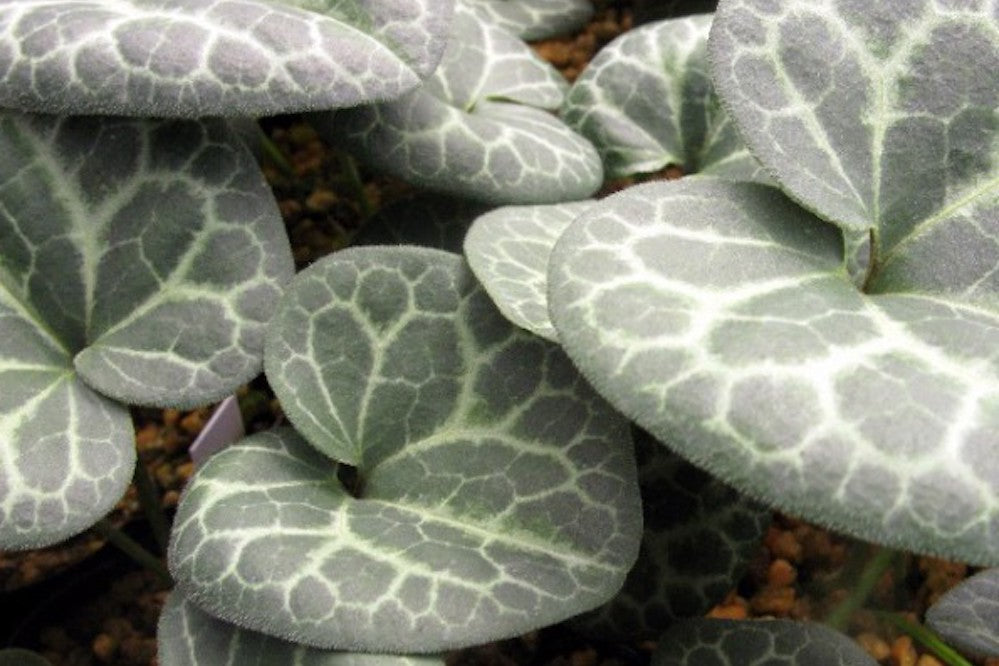Asarum 'Koton'
Approx. 0.5 litre pot
About this cultivar:
Asarum 'Koton' is a new one to us. Not just us it seems, I can't find it on the RHS plantfinder either. I doesn't seem to have Koton, sorry, caught on. What do we know so far? Really attractive marked foliage, almost like one of the ornamental Brunneras. I love these type of exotic looking plants that also seem to look at home in the British Isles, the tropics, or even outer space.
- Position: Full sun, partial shade, full shade
- Soil: Almost any soil - grows well in Ballyrobert!
- Flowers: March, April, May
- Other features: Great Ground Cover, Dappled Shade or Full Shade Loving, Woodland Plant, Scented,
- Hardiness: H6 - Hardy in all of UK and northern Europe (-20 to -15°C), Fully hardy - grows well in Ballyrobert!
- Habit: Mat forming
- Foliage: Semi evergreen
- Height: 5 - 15 cm (0.1 - 0.5 ft)
- Spread: 15 - 45 cm (0.5 - 1.5 ft)
- Time to full growth: 2 to 5 years
- Plant type: Herbaceous Perennial
- Colour: White, green, purple
- Goes well with: Other woodlanders
About this genus:
Asarum is a genus of plants in the birthwort family (Aristolochiaceae if you want a mouthful) which gets in name from the genitive plural of the Latin āsa meaning altar or sanctuary. The common name is wild ginger because the rhizome tastes and smells similar to ginger root, but the two are not particularly related. In fact, Asarum may be poisonous so watch out!
A genus of low-growing herbs distributed across the temperate zones of the Northern Hemisphere, with most species in East Asia and North America, and one species in Europe. Biogeographically, Asarum originated in Asia.
They have characteristic kidney-shaped cyclamen-like leaves, growing from creeping rhizomes, and bear small, axillary, brown or reddish flowers.
Aside- I often debate putting descriptions of appearance in here, surely the photos are enough!?! – Anyway, two leaves emerge each year from the growing tip. The curious jug-shaped flowers, which give the plant an alternate name, little jug, are borne singly in spring between the leaf bases. However, you will rarely see these unless you get down and poke around!
In the garden they grow most places without much trouble but tend to prefer moist, shaded sites with humus-rich soil. They are often thought of as shade and/or groundcover plants. Some of the evergreen species are great for pots.


